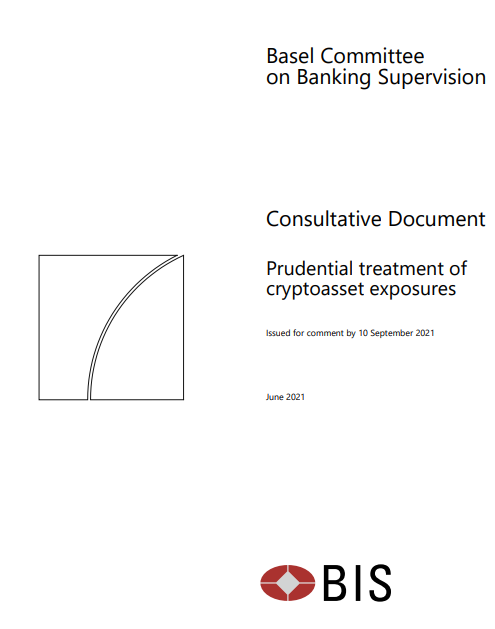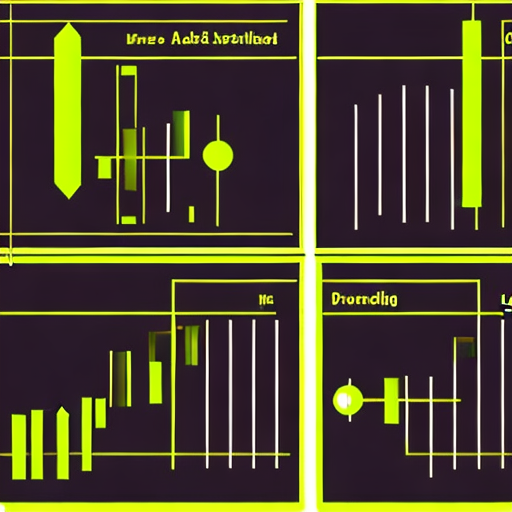Will Banks hold crypto by 2025?
"Prudential treatment of cryptoasset exposures"
https://www.bis.org/bcbs/publ/d519.pdf

This was easily found using a Search once I heard the title.
This publication is available on the BIS website (www.bis.org).
© Bank for International Settlements 2021 All rights reserved. Brief excerpts may be reproduced or translated provided the source is stated.
"Group 1 cryptoassets include tokenised traditional assets (Group 1a) and cryptoassets with effective stabilisation mechanisms (Group 1b)."
"Group 2 cryptoassets. Those that fail to meet any of the classification conditions below"
-- "..either is a tokenised traditional asset or has a stabilisation mechanism that is effective at all times.."
-- "cryptoasset arrangements that meet the condition above are clearly defined and legally enforceable in jurisdictions"
-- "designed and operated to sufficiently mitigate and manage any material risks"
-- "Entities that execute redemptions, transfers, or settlement finality of the cryptoasset are regulated and supervised." PDF

[ "A virtual store for crypto assets, like a painting of a futuristic mall." by Dezgo]
"Banks are responsible for: (i) assessing on an ongoing basis, whether a cryptoasset is compliant with the classification conditions; and (ii) demonstrating to supervisors how a cryptoasset fulfils these conditions. To this end, banks should have in place the appropriate risk management policies, procedures, governance, human and IT capacities to evaluate the risks of engaging in cryptoassets and implement these accordingly on an ongoing basis." PDF
"To calculate RWA for cryptoassets in illustrative example 1, the bank must include in risk-weighted assets the sum of the following two amounts:
• The risk weighted assets applicable to a direct holding of the underlying traditional asset.13
• The value of the cryptoasset holding multiplied by the risk weight applicable to an unsecured loan to the redeemer.
As with exposures to traditional assets, the specific risk weights referenced in the two elements above will depend on factors," PDF

I tried asking GPT-J which assets might fall into Group 1 or 2 but the most interesting response generated so far is;
"If all the cryptocurrencies in Group 1 were to be liquidated and converted into Fiat-Currencies, where would be the resulting loss? What would the resulting balance sheet look like? If all the cryptocurrencies in Group 2 were to be liquidated and converted into Fiat-Currencies, where would be the resulting loss? What would the resulting balance sheet look like?"

Read This Report, which is already 18 months old.
-- CBDC's are coming Oct 18, 2022
-- CBDC Document Links Mar 12, 2022
-- Fed Releases CBDC document Jan 21, 2022
-- Bank lending goes negative in 2021 Oct 12, 2021
-- RBIH - Reserve Bank Innovation Hub May 29, 2022
^ Here are a few other related posts. Will banks start holding Bitcoin?
Digital Asset Classification Standard (DACS) Methodology October 2022
https://downloads.coindesk.com/cd3/CDI/Digital+Asset+Classification+Standard+Methodology.pdf
Interesting!
!ALIVE | !BBH | !PIZZA
@darkflame! Your Content Is Awesome so I just sent 1 $BBH (Bitcoin Backed Hive) to your account on behalf of @vocup. (2/20)
@darkflame! You Are Alive so I just staked 0.1 $ALIVE to your account on behalf of @vocup. (2/20)
The tip has been paid for by the We Are Alive Tribe through the earnings on @alive.chat, feel free to swing by our daily chat any time you want.

Thank you! !PIZZA I am !ALIVE !IAMALIVE
👍🙏
Thank you @vocup! !PIZZA I am !ALIVE
There are many interesting paragraphs including this one.
https://www.bis.org/bcbs/publ/d519.pdf
@darkflame, sorry! You need more $ALIVE to use this command.
The minimum requirement is 1000.0 ALIVE staked.
More $ALIVE is available from Hive-Engine or Tribaldex
Reverted..
😂
@youarealive @iamalivechalleng @alive.chat
I tried to transfer 963 ALIVE from one account to this one, to power up so I could participate in the ALIVE bot, but the transfer failed and I did a whole forensic audit of ALIVE so that I could find where my tokens went. They ended up reverting and being sent back to where they were to begin with, so I deleted the post with all the references to the transaction failure. I am going to recommend that the ALIVE community set up a HIVE:ALIVE diesel pool asap because there is no liquidity at all on the marketplace.
Hive-engine was having some major node issues recently, and all last week it was very unstable, it must have been why, as to a diesel pool, we are planning on it, not right away though.
The only problem is that an average Joe would hardly read (and understand) this financial-legal language.
I gifted $PIZZA slices here:
darkflame tipped youarealive (x1)
vocup tipped darkflame (x1)
@darkflame(2/10) tipped @vocup (x1)
Send $PIZZA tips in Discord via tip.cc!
Post voted 100% for the hiro.guita project. Keep up the good work.
Stabilizer for CENT Token
New manual curation account for Leofinance and Cent
The full 2023 BIS report is out now.
"This Report went to press on 16 June 2023 using data available up to 31 May 2023."
https://www.bis.org/publ/arpdf/ar2023e.pdf
"A tale of three journeys. Introduction:
Continue reading, and leave your feedback in the comments.